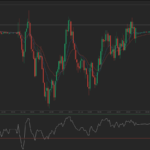Soft futures were mixed on Wednesday with cocoa, cotton and coffee declining, while sugar advanced.
On the ICE Futures U.S. Exchange, raw sugar for October delivery surged to $0.1696 a pound at 12:28 GMT, up 0.12% on the day. Futures ranged between days high and low of $0.1698 and $1686. Meanwhile on the NYSE Liffe in London, white sugar with the same delivery month traded at $491.25 a ton at 12:30 GMT, up 0.44% on the day. The contract advanced nine out of ten days and has so far gained 2.3% this week after settling 2.55% higher the previous one.
Sugar continued its advance on concern supplies that can be delivered after the expiration of the October contract will be limited. On the NYSE Liffe, the gap between white sugars October and December contracts widened to over $10, up from $2.50 in the end of June, which is known as backwardation.
Fabienne Pointier, an analyst at Lausanne, Switzerland-based researcher Kingsman SA, said by e-mai for Bloomberg: “The white premium is firm and so is the October/December spread. At the moment, I don’t see much deliverable white sugar around for the October expiry. The Thais are still not selling and Brazilian millers are not focusing on refined. We also see demand in importing countries.”
Raw sugar gained on Monday and Tuesday as frost may damage the crop in Brazil and cut supply, while speculation arose demand may increase.
Last week, temperatures fell below zero in some of Brazil’s sugar cane-, coffee, corn- and wheat-growing areas in the states of Parana, Santa Catarina and Mato Grosso do Sul. Frost was also seen in Argentina’s main cane growing area, Tucuman, which is expected to cut production.
Meanwhile, increased demand is expected form China. Due to a Chinese government policy to stockpile domestic-produced sweetener, local prices are increasing above the international level, which results in increased imports. Outbound shipments from Brazil’s biggest ports on July 24 were supposed to transport 1.7 million tons of sugar, up from 1.33 million a week earlier. Exports to China were supposed to be three times higher than the previous week. According to oby Cohen, a director at London-based Czarnikow, imports of raw sugar into China may exceed 3 million tons this season, 500,000 tons more than an April estimate.
Cotton plunges
Cotton swung between gains and losses on Wednesday and traded at $0.8507 a pound at 12:44 GMT, down 0.09% on the day. Prices held in range between days high and low of $0.8549 and $0.88503 a pound respectively. The December contract slipped 0.29% on Tuesday and is so far trading 0.05% lower on the week after losing as much as 1% the preceding one.
In its weekly crop progress report on Monday, the USDA said cotton squaring advanced from last week’s 77% to 89%, but remained below last year’s 93% and the five-year average reading of 90%.
As for the cotton condition, it was overall better than the previous week’s and fairly unchanged compared to last year. The U.S. Department of Agriculture said that as of July 28, 22% of the cotton crop was rated very poor-poor compared to 22% a year earlier. Meanwhile, 33% of cotton was categorized as “Fair”, 1% lower than in 2012. As for the premium quality, 45% fell in the “Good” and “Excellent” categories, compared to 44% the same week last year.
Elsewhere on the market, arabica coffee for September delivery traded at $1.1905 a pound at 12:49 GMT, down 0.96% on the day. Prices held in range between $1.2073 and $1.1873. On the NYSE Liffe, robusta for the same delivery month fell 0.27% to $1 871 a ton. Futures varied between days high and low of $1 883 and $1 870 a ton respectively.
Meanwhile, on the ICE U.S. Exchange, cocoa September futures fell to $2 278 a ton at 12:51 GMT, down 0.15% on the day. Prices ranged between high and low of $2 302.50 and $2 268.50. In London, cocoa futures with the same settlement month rose to GBP1 559 a ton, marking a 0.26% daily advance. Prices held in range between GBP1 571 and GBP1 548.





